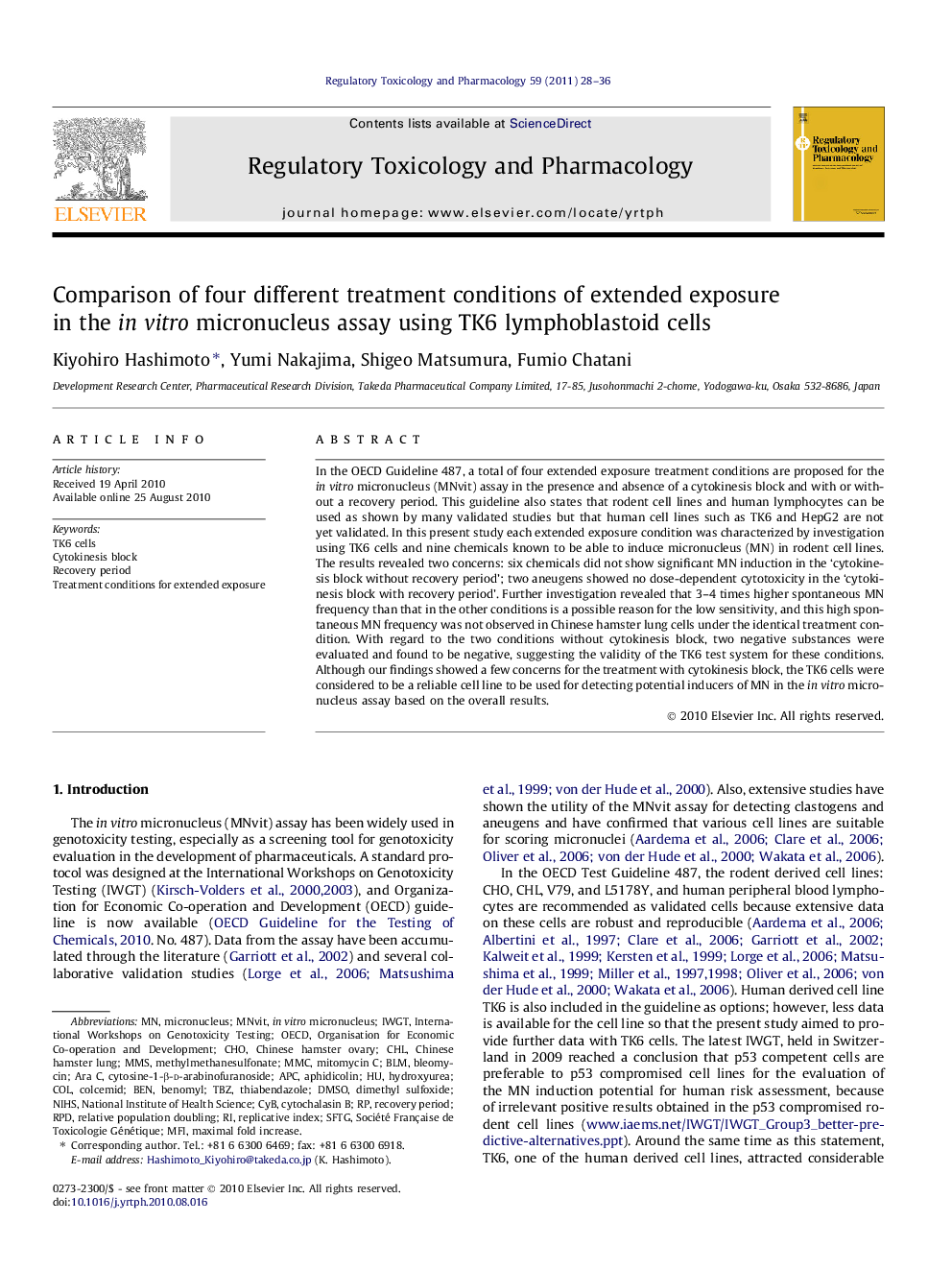| Article ID | Journal | Published Year | Pages | File Type |
|---|---|---|---|---|
| 5857610 | Regulatory Toxicology and Pharmacology | 2011 | 9 Pages |
In the OECD Guideline 487, a total of four extended exposure treatment conditions are proposed for the in vitro micronucleus (MNvit) assay in the presence and absence of a cytokinesis block and with or without a recovery period. This guideline also states that rodent cell lines and human lymphocytes can be used as shown by many validated studies but that human cell lines such as TK6 and HepG2 are not yet validated. In this present study each extended exposure condition was characterized by investigation using TK6 cells and nine chemicals known to be able to induce micronucleus (MN) in rodent cell lines. The results revealed two concerns: six chemicals did not show significant MN induction in the 'cytokinesis block without recovery period'; two aneugens showed no dose-dependent cytotoxicity in the 'cytokinesis block with recovery period'. Further investigation revealed that 3-4 times higher spontaneous MN frequency than that in the other conditions is a possible reason for the low sensitivity, and this high spontaneous MN frequency was not observed in Chinese hamster lung cells under the identical treatment condition. With regard to the two conditions without cytokinesis block, two negative substances were evaluated and found to be negative, suggesting the validity of the TK6 test system for these conditions. Although our findings showed a few concerns for the treatment with cytokinesis block, the TK6 cells were considered to be a reliable cell line to be used for detecting potential inducers of MN in the in vitro micronucleus assay based on the overall results.
